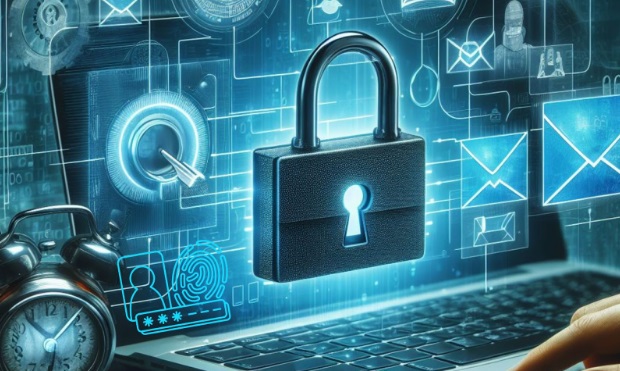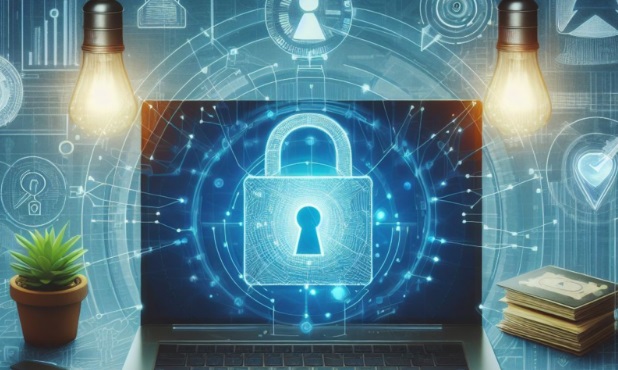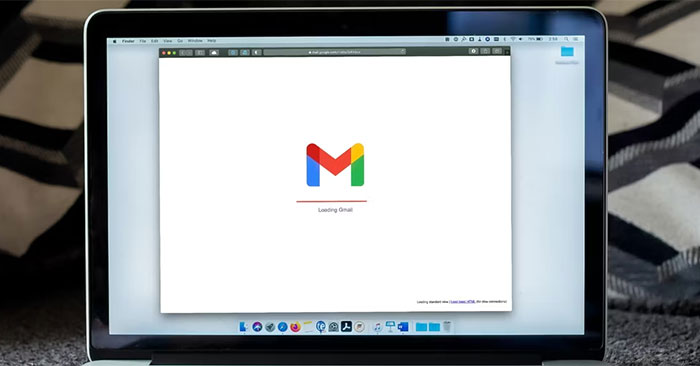From Encryption to Authentication: A Comprehensive Guide to Securing Your Emails
This has led to the development and implementation of various security measures, among which email encryption and authentication options stand out as key concepts. Email encryption ensures that the content of the emails is unreadable to anyone other than the intended recipients, while authentication options verify the identity of the users accessing the email service, adding an extra layer of security. Together, these technologies form the cornerstone of comprehensive email security strategies in the digital era.
 Picture 1 of From Encryption to Authentication: A Comprehensive Guide to Securing Your Emails
Picture 1 of From Encryption to Authentication: A Comprehensive Guide to Securing Your Emails
Understanding Email Encryption
Email encryption is a technology that transforms readable data into an encoded format, which can only be decoded or made readable again with the correct decryption key. This process plays a crucial role in protecting the privacy of email content and securing data from potential breaches and eavesdropping. Encryption helps in maintaining the confidentiality and integrity of the information being exchanged via email.
There are primarily two types of email encryption:
- End-to-End Encryption: This ensures that the email content is encrypted at the sender's end and remains encrypted until it reaches the intended recipient, who has the key to decrypt it. This method prevents any unauthorized access to the email content during transit.
- Transport Layer Encryption: This type of encryption secures the email content as it moves from the client to the server or between servers. It's a vital security measure but less secure than end-to-end encryption since the email might be decrypted at the server level.
The Evolution of Email Encryption
The history of email encryption is a testament to the evolving landscape of digital security. Initially, email communication was sent in plain text, making it susceptible to interception and unauthorized access. As the internet and digital technologies advanced, the need for secure email communication became evident, leading to the development of encryption protocols and standards. This evolution is detailed in a recent article, providing valuable insights into the advancements in email encryption.
Technological advancements have significantly shaped email encryption practices. From simple cipher techniques to sophisticated algorithms, email encryption has evolved to provide stronger security measures against increasingly complex cyber threats. This evolution has been driven by both the need for privacy and the demand for regulatory compliance in handling sensitive information.
Diving into Authentication Options
Authentication plays a critical role in email security by ensuring that only authorized users can access email accounts and services. It verifies the identity of a user, or the authenticity of an email, making it an essential component of secure email communication.
Common authentication methods include:
- Passwords: The most basic form of authentication, requiring users to enter a secret password to access their email accounts.
- Two-Factor Authentication (2FA): An added layer of security that requires not only a password but also a second factor, such as a code sent to the user's phone, to verify their identity.
- Biometric Verification: An advanced authentication method that uses unique biological traits, such as fingerprints or facial recognition, to verify users' identities.
The importance of strong authentication cannot be overstated. It complements encryption by ensuring that even if someone were to intercept encrypted emails, they would not be able to access them without passing the authentication checks. This dual approach to email security—combining encryption with robust authentication methods—offers a more comprehensive defense against cyber threats and unauthorized access.
Introduction to Echoworx and Its Role in Email Encryption and Authentication
Echoworx is a prominent player in the realm of email security, offering comprehensive solutions that encompass both email encryption and authentication. With a focus on innovation and user-centric design, Echoworx provides robust security measures that protect digital communications against the evolving landscape of cyber threats. By leveraging advanced encryption technologies and offering a range of authentication options, Echoworx ensures that emails remain confidential and accessible only to authorized users. Learn more about Echoworx's solutions here.
Highlighting Echoworx's Innovative Solutions for Email Security
Echoworx's innovative approach to email security is demonstrated through its suite of encryption and authentication solutions designed to meet the diverse needs of organizations and individuals. From securing sensitive corporate communications to protecting personal data, Echoworx offers tailored solutions that address common security challenges, such as phishing attacks, data breaches, and unauthorized access. By incorporating advanced authentication options, including two-factor authentication and biometric verification, Echoworx enhances the security and integrity of email communications.
Combining Encryption with Authentication for Maximum Security
The integration of encryption and authentication is fundamental to securing email communications effectively. Echoworx recognizes that while encryption safeguards the content of emails, authentication ensures that only authorized individuals can access these encrypted messages. This dual-layer security strategy is crucial in preventing unauthorized access and data leaks. Real-world scenarios, such as confidential business negotiations or the transmission of personal information, underscore the importance of this integrated approach for enhanced security.
Best Practices for Secure Email Communications
To maximize email security, Echoworx advocates for several best practices, including the consistent use of encryption and authentication, regular security audits, and the training of staff in cybersecurity awareness. Additionally, adopting a policy of least privilege and staying informed about the latest security threats can further enhance email security.
The Future of Email Security
The future of email security is shaped by emerging trends in encryption and authentication, driven by technological advancements and evolving cyber threats. Predictions for the future include the increased use of artificial intelligence and machine learning in detecting and preventing threats, as well as the adoption of blockchain technology for secure and transparent email communications.For an in-depth exploration of these trends, refer to this comprehensive study.
Echoworx's Forward-Looking Approach
Echoworx stays at the forefront of email security trends through its commitment to innovation and continuous improvement. By closely monitoring the cybersecurity landscape and adapting its solutions to meet emerging challenges, Echoworx ensures that its clients are equipped with the latest in email encryption and authentication technologies. This forward-looking approach reflects Echoworx's dedication to providing cutting-edge security solutions that protect against both current and future digital threats.
You should read it
- Setting up Wi-Fi authentication in Windows Server 2008 - Part 1
- What is end-to-end encryption? How does it work?
- 5 popular encryption algorithms you should know
- Top 5 best USB encryption software
- Authenticate what two factors are and why you should use it
- What is Zero-Knowledge Encryption? Why use this type of encryption?
- Pros and cons of passwordless authentication
- Protect your GitHub account with two-factor authentication
- How to install VPN on Ubuntu
- How to turn on two-factor authentication to protect your Firefox account
- Set up Wi-Fi authentication in Windows Server 2008 - Part 2
- Discover the difference between symmetric and asymmetric encryption






 How to use Bitlocker to encrypt data on Windows 10 (Part 1)
How to use Bitlocker to encrypt data on Windows 10 (Part 1) Microsoft changes the default settings to keep the content stored on the hard drive safe
Microsoft changes the default settings to keep the content stored on the hard drive safe Guide to securing 2 layers of Facebook
Guide to securing 2 layers of Facebook iPGMail: The best way to encrypt emails on iOS
iPGMail: The best way to encrypt emails on iOS Setting up Wi-Fi authentication in Windows Server 2008 - Part 1
Setting up Wi-Fi authentication in Windows Server 2008 - Part 1 Comprehensive Gmail security guide
Comprehensive Gmail security guide